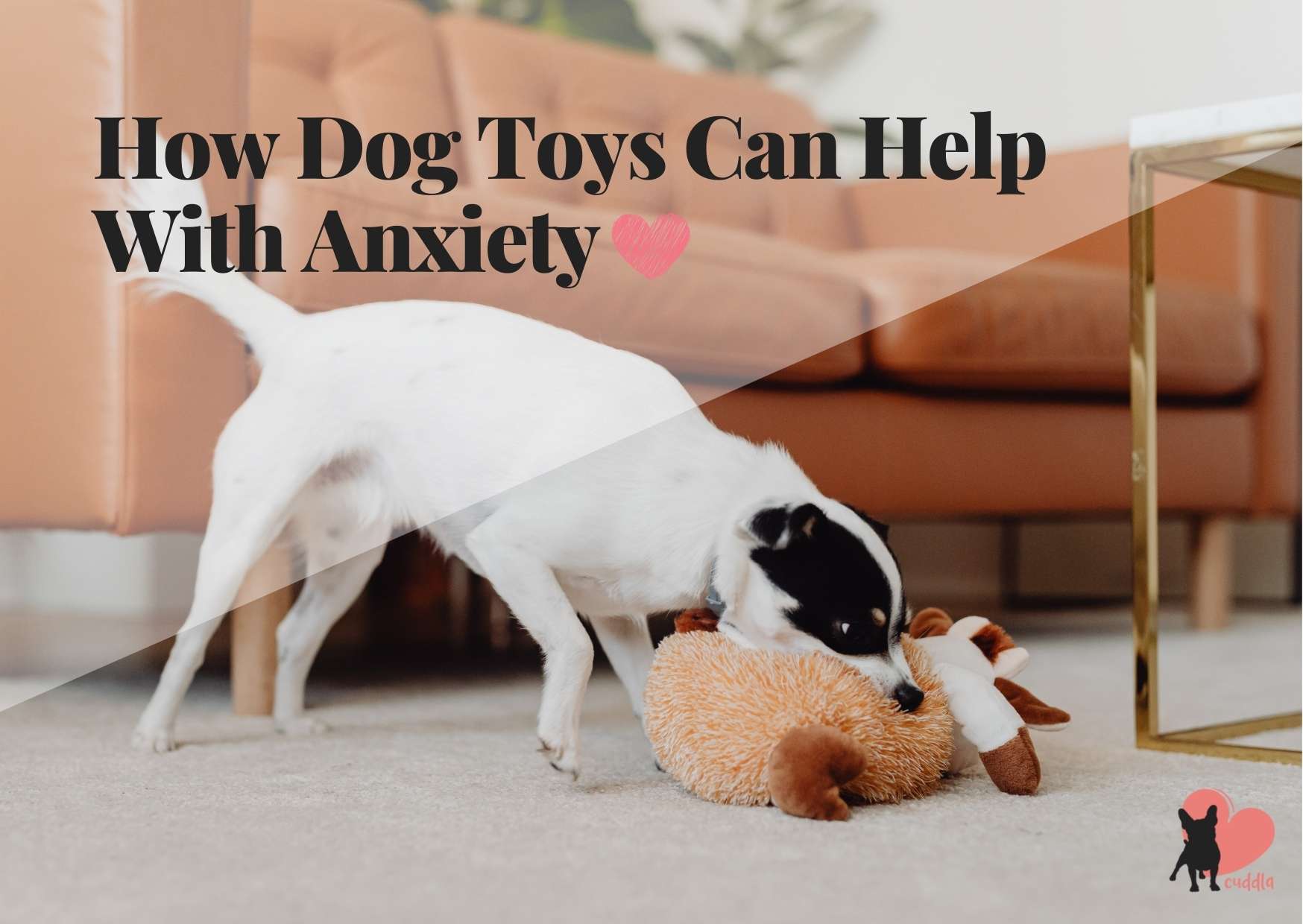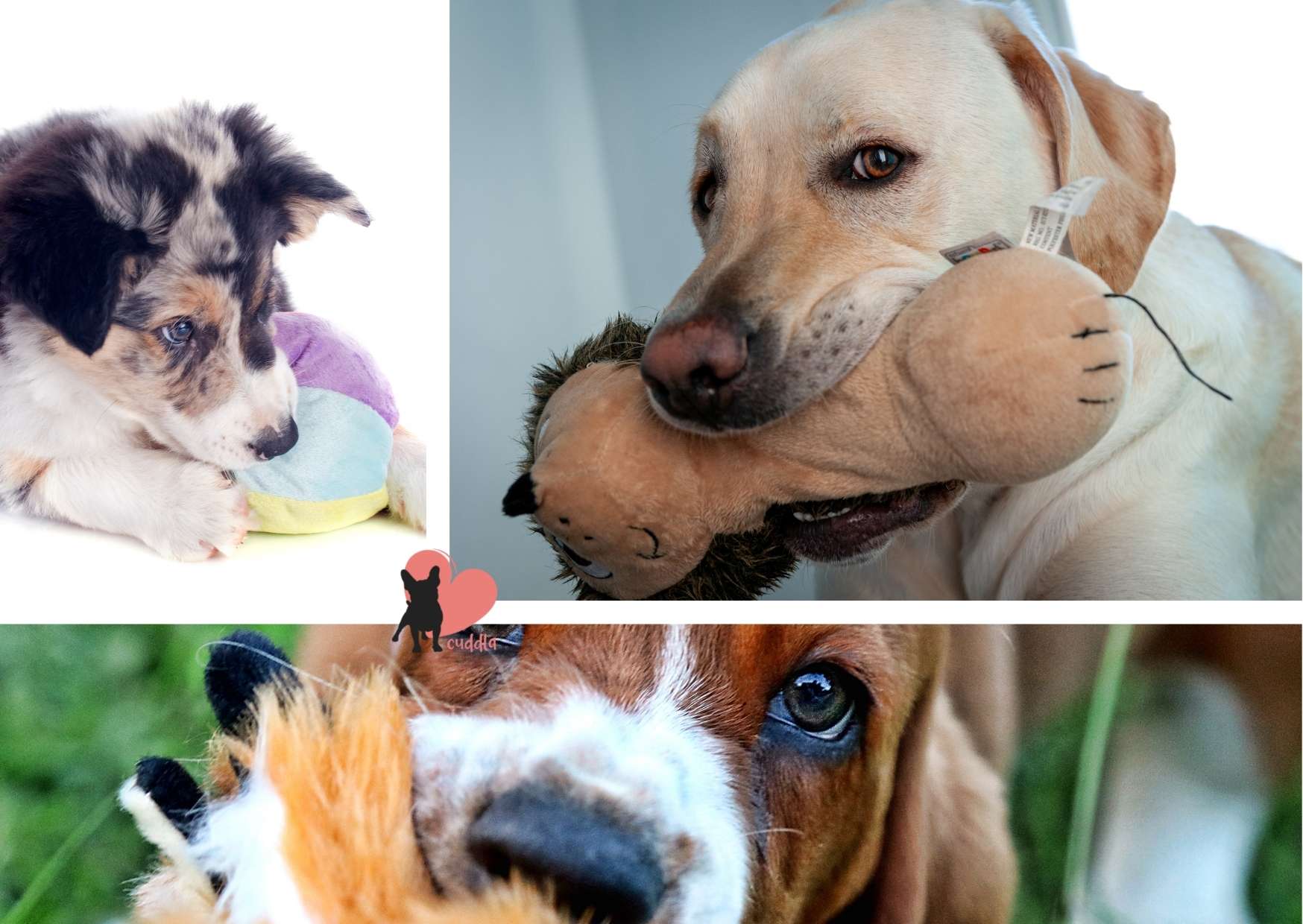
Dog toys can prove incredibly effective in helping combat anxiety, acting as a kind of mental stimulation for your pup, meaning they are less likely to direct their nervous energy towards other, more destructive or undesirable behaviours, like excessive chewing, toilet accidents or incessant barking.
In this blog post, we will look at why dogs develop anxiety in the first place, which breeds are most prone, as well as the helpful role that both chew and puzzle toys can play in tackling canine anxiety.
What Breed of Dog Has The Most Anxiety?
First, though, let’s look at which breeds are most prone to developing anxiety. Just as individual humans can be naturally more worrisome, whilst others remain level-headed and chilled – seemingly no matter what – there are certain dog breeds that get more anxious than others. These include:
Labrador Retrievers
These lovable, faithful dogs consistently rank amongst the most popular breeds nationwide, and it isn’t hard to see why. Highly sociable, attractive and loyal to a fault, Labradors are a fantastic addition to any family. Because they are a social breed, they can struggle with separation anxiety more than most breeds.
Border Collies
In this instance, the breed’s intelligence is its downfall. Border Collies are one of, if not the smartest dog breeds out there. Their impressive mental capacity, however, also means they are more prone to anxiety, particularly separation anxiety. As we will see shortly, anxiety in dogs often comes about from a lack of mental stimulation, and when you are as smart as a Border Collie, you need mental stimulation – and lots of it.
Basset Hounds
Loyalty is one of the most desirable traits in dogs – after all, there’s a reason the term “human’s best friend” was ever coined. But it means that if that attention isn’t reciprocated, anxious and destructive behaviours can develop. Nowhere is this more apparent than within Bassett Hounds, who miss the companionship of their owners arguably more than most.

Insider Tip: It’s important to note, though, that any dog can get anxious, regardless of breed. So, it’s handy to know how to prevent it from developing, if possible, and if not, then how to tackle it so it doesn’t turn into a bigger problem.
Why Does Anxiety Occur?
As mentioned above, anxiety tends to develop most in active and intelligent breeds, as well as those that have been bred to be more sociable; hunting dogs, for instance, who traditionally worked, not only side by side with their owners, but with other dogs, too.
Also, small dogs bred as companion pets can suffer from anxiety since their role is to keep their owner accompanied. In this category fall Boston Terriers, Pugs, and French Bulldogs, for instance.
If this pent up energy – be it stemming from a need to socialise, being a highly active dog or just simply high levels of intelligence – has to be channelled somewhere. If it isn’t, then dogs are likely going to divert it into whatever they have available, and that’s why toys can be so helpful!
But before that, let’s see what, are the typical signs shown by an anxious dog, so you know what to look out for.
What Are The Most Common Signs Of Anxiety In Dogs?
The most common behaviours exhibited by anxious dogs include:
- Non-stop barking, howling or crying.
- Urine dribbling.
- Chewing everything in sight.
- Exhaling sharply (chuffing).
- Tail thumping.
- Escaping.
- Yawning constantly.
- Shaking and trembling.
- Hiding.
- Scratching.
- Tail between legs.
The Different Types Of Anxiety Experienced By Dogs
Anxiety is a broad term that actually encompasses several different, more specific types of anxiety. The types of anxiety most commonly experienced by dogs are:
- Separation anxiety, which, as the name suggests, occurs when a dog and its owner are apart for too long (and sometimes, in severe cases, when they are apart at all).
- Social anxiety displays itself as a dog getting nervous, agitated or aggressive when around other dogs, or sometimes, people.
- Fear anxiety is an anxiety which arises from new unknowns; this can be any number of things, ranging from a new place to a new experience. Think about how many dogs act scared during storms and fireworks.
Read also: How to Calm Dog Fears and Anxiety.

How To Prevent Anxiety From Developing In Dogs
Although there are certain dog breeds more likely to be anxious than others, that’s not to say that you can’t still prevent it from developing, if you know-how, even in the most naturally nervous of dogs. How? Well, as with most dog behaviours, it comes down to training, reinforcement, positive association and, of course, repetition.
If a dog experiences social anxiety around other dogs, for instance, then establishing regular contact between that dog and others is crucial in overcoming that anxiety. Over time, you can introduce other, different dogs, introduce more dogs at once, and so on until your dog is no longer so wary about meeting other pooches.
#1 – Using Toys To Develop Positive Associations
Aside from being a great mental distraction, toys are also helpful in tackling another form of anxiety, known generally as fear anxiety. This broad term can be used to describe when a dog gets anxious/scared from new, unknown or unusual stimuli.
New places often scare dogs, especially when they are being bombarded with sensory stimuli, like smells, loud noises and lots of movement – a busy dog park in the centre of town is a good example of this. Whilst this is the dream scenario for some dogs, for others, it’s their worst nightmare.
A way to help tackle this is to take along one of your dog’s favourite toys. That way, they will learn to associate that new, big, scary place with something they know to be positive. Repeat this over several visits, and your dog will soon have formed a positive mental association between the ‘park’, for instance, and getting to play with his or her favourite toy!
#2 – What Toys & Treats Are Best For Dogs With Anxiety?
The toys that are best for anxiety are the ones that are going to keep your dog engaged and interested, the longest. Treats, too, provide a great distraction from a dog’s anxiety, particularly with more food-oriented breeds. The best toys for combating anxiety combine the two, offering both something to play with, as well as the reward of a treat at the end of it.
Treat balls, which a dog has to roll around to release the tasty morsel within, are a fantastic example of this, and can keep your dog entertained for hours whilst you’re out and about.
Hiding treats around the home is a similarly exciting thing for your dog, leaving them in essence with their own little treasure hunt to get on with whilst you’re away.
Another option is the tried-and-trusted squeaky toy, which your dog can chew and wrestle with to its heart’s content!
P.S. Need more help with toys and anxiety remedies? Check How to Calm Dog Fears and Anxiety for natural ways of calming your dog’s anxiety and Best Dog Toys Guide.
